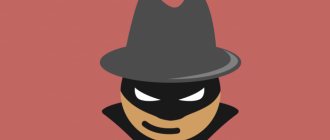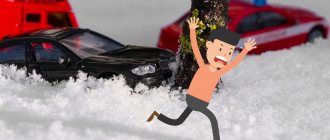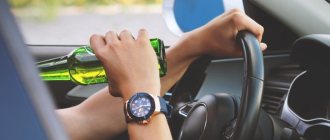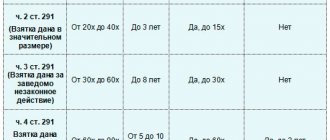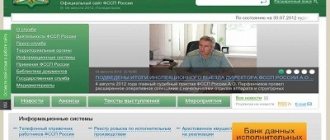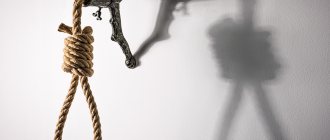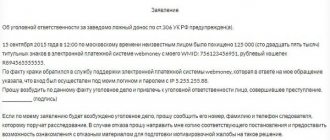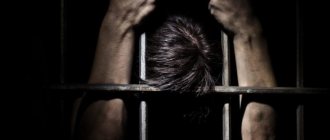Punishment for driving a vehicle under the influence of cannabinoids
The use of cannabinoids leads the driver to become intoxicated, therefore the punishment for this is prescribed under the corresponding article - 12.8 of the Code of Administrative Offenses. Persons driving while drunk are deprived of their license for a period of 18-24 months and receive a fine of 30,000 rubles. It will not be possible to avoid punishment by refusing to undergo examination, since Art. 12.26 the same sanctions are provided for this.
Punishment for drug use
Lawyer: Ruslan Saleev
offline now
Good afternoon Kirill!
Article 228. Illegal acquisition, storage, transportation, production, processing of narcotic drugs, psychotropic substances or their analogues, as well as illegal acquisition, storage, transportation of plants containing narcotic drugs or psychotropic substances, or their parts containing narcotic drugs or psychotropic substances 1 Illegal acquisition, storage, transportation, production, processing without the purpose of sale of narcotic drugs, psychotropic substances or their analogues in a significant amount, as well as illegal acquisition, storage, transportation without the purpose of sale of plants containing narcotic drugs or psychotropic substances, or their parts, containing narcotic drugs or psychotropic substances in a significant amount - (as amended by Federal Law dated 01.03.2012 N 18-FZ)
shall be punishable by a fine in the amount of up to forty thousand rubles, or in the amount of the wages or other income of the convicted person for a period of up to three months, or by compulsory labor for a term of up to four hundred eighty hours, or by corrective labor for a term of up to two years, or by restriction of liberty for a term of up to three years. , or imprisonment for the same period. (as amended by Federal Laws dated December 27, 2009 N 377-FZ, dated May 6, 2010 N 81-FZ, dated December 7, 2011 N
2. The same acts committed on a large scale -
shall be punishable by imprisonment for a term of three to ten years with or without a fine in the amount of up to five hundred thousand rubles or in the amount of the wages or other income of the convicted person for a period of up to three years and with or without restriction of freedom for a term of up to one year.
Article 88 of the Criminal Code of the Russian Federation. Types of punishments imposed on minors (current version)
1. The types of punishments imposed on minors are:
a) fine;
b) deprivation of the right to engage in certain activities;
c) compulsory work;
d) correctional labor;
e) restriction of freedom;
f) imprisonment for a certain period.
2. A fine is imposed both if the convicted minor has independent income or property that can be levied against, or if there is none. A fine imposed on a convicted minor may, by a court decision, be collected from his parents or other legal representatives with their consent. A fine is imposed in the amount of one thousand to fifty thousand rubles or in the amount of wages or other income of a convicted minor for a period of two weeks to six months.
3. Compulsory work is assigned for a period of from forty to one hundred and sixty hours, consists of performing work that is feasible for a minor, and is performed by him in his free time from study or main work. The duration of execution of this type of punishment by persons under the age of fifteen years cannot exceed two hours a day, and by persons aged from fifteen to sixteen years - three hours a day.
4. Correctional labor is assigned to convicted minors for a period of up to one year.
5. Restriction of freedom is imposed on convicted minors as the main punishment for a period of two months to two years.
6. Punishment in the form of imprisonment is imposed on convicted minors who committed crimes under the age of sixteen for a period of not more than six years . For the same category of minors who have committed particularly serious crimes, as well as for other convicted minors, punishment is imposed for a term of not more than ten years and is served in educational colonies. Punishment in the form of imprisonment cannot be imposed on a convicted minor who committed a crime of minor or medium gravity for the first time at the age of sixteen, as well as other juvenile convicts who committed crimes of minor gravity for the first time.
6.1. When a convicted minor is sentenced to imprisonment for committing a grave or especially grave crime, the lower limit of punishment provided for by the relevant article of the Special Part of this Code is reduced by half.
6.2. If a juvenile convict who has been given a conditional sentence has committed a new crime during the probationary period that is not particularly serious, the court, taking into account the circumstances of the case and the identity of the perpetrator, may re-decide on a conditional sentence, establishing a new probationary period and assigning fulfillment of certain duties provided for in part five of Article 73 of this Code.
7. The court may give instructions to the body executing the punishment to take into account certain characteristics of his personality when treating a convicted minor.
Thus, from one and a half years to 6 years of imprisonment. I think they will give a suspended sentence with a probationary period without restriction of freedom
Ask a Question
What are cannabinoids?
Cannabinoids are a group of narcotic, psychotropic substances contained in hemp, marijuana or excreted synthetically. They have a strong impact on the functioning of the brain. Cannabinoids are sometimes found in medications. They are used as an analgesic or antiemetic, most often for patients with cancer.
What medications contain cannabinoids?
Usually, on the packaging of medicines containing even the smallest proportions of narcotic substances, a warning is printed about the dangers of driving after taking them. But you can be 100% sure that there are no drugs only after reading the ingredients.
Here is a list of some drugs containing cannabinoids:
- hemp oil (prohibited in many countries);
- "Marinol" ("Dronabinol");
- "Sativex" ("Nabiximols");
- "Nabilone".
What are drugs?
Translated from Greek, the word means “to stupefy,” and according to the World Health Organization, drugs are chemical agents that induce a state of stupor, coma, or render the user insensitive to pain.
At the end of the 20th century, the term expanded - others began to be classified as narcotic substances (psilocybin mushrooms, hemp products, etc.).
In jurisprudence, the concept of drug is used even more widely. The term includes all illicit psychoactive substances, regardless of their origin - be it synthetic drugs or “natural” components.
The scientific definition of a drug includes three aspects of the issue:
- Medical. A substance can be considered a narcotic if it has a specific effect on the user. The latter can be hallucinogenic, pronounced sedative, exciting the functions of the nervous system or stimulating, etc.
- Social. Substance consumption becomes large-scale and carries social significance (dependence forms, the risk of criminal behavior increases, etc.).
- Legal. The drug is included in the list of narcotic drugs. This is an official document of the Russian Federation, which presents a list of psychotropic and narcotic substances and their precursors (“precursors” that take part in the reaction to form the final product), the circulation of which is prohibited in the country.
The list of funds includes 4 main groups:
- Prohibited substances:
- narcotic drugs (hashish, heroin);
- psychotropic (methaqualone);
- Substances whose circulation is limited and subject to control:
- narcotic drugs (morphine, codeine);
- psychotropic (ketamine).
- Psychotropic substances, the circulation of which is limited, but control measures are not fully applied (dextromethorphan, aprofen (Taren)).
- Components that can be used in the production of narcotic substances, as well as poisons (ephedrine, toluene, acetone).
The use of any narcotic substance has an impact on the psyche. Many of them have a versatile effect; for example, it is enough to define what spice is to understand what consequences the user faces. Any drugs provoke characteristic symptoms from the central nervous system.
How long does it take to be eliminated from the body?
The content of narcotic drugs in the body is checked in 2 ways: by testing urine or blood. Cannabinoids are contained in urine a little longer, and this is what is tested during the examination for intoxication.
The concentration depends not only on the volume of the substance taken, but also on the method and period of application:
- after a one-time use of a drug (marijuana, hemp, hashish), cannabinoids will be eliminated within 6-12 days;
- Regular use of these drugs will leave a mark on the body for 3-10 months;
- a one-time use of a medicinal product with a low cannabinoid content will be noticeable within 3-8 days;
- undergoing a course of treatment using drugs with cannabinoids will fill the body with them for 1-3 months.
To speed up the release of these substances from urine and blood, you should regularly drink plenty of water and exercise. But in any case, it is better to refrain from driving until the drugs have time to completely leave the body.
How to avoid punishment?
You can avoid punishment for using cannabinoids while driving, as well as for other drugs, in 3 ways:
- prove the absence of signs of intoxication;
- prove that the concentration of the substance is insufficient to impose a sentence;
- prove the presence of procedural violations.
About signs of intoxication
Signs of intoxication include:
- the smell of alcohol;
- impaired coordination and/or speech;
- inadequate reaction to the environment;
- sudden change in skin tones.
Even one sign is enough to send you for examination. It must be indicated both when testing with a breathalyzer on the road and when passing a medical examination. To prove in court the absence of these signs, the driver must videotape the entire process: from greeting the traffic police officer to signing the protocol at the end of the examination at the medical institution. The absence of the smell of alcohol, of course, cannot be proven by video recording, but it will not be indicated in the documents if the driver is suspected of drug rather than alcohol intoxication.
About the concentration of cannabinoids
Another important note: the mere presence of narcotic substances in the body is not enough to deprive of rights. The Code of Administrative Offenses only talks about the concentration for alcohol, so drivers get the feeling that their license is being revoked if they have any amount of drugs in their body. But that's not true. The official Information Letter of the Central Chemical-Toxicological Laboratory of Moscow State Medical University No. 179-25/12I indicates the maximum concentrations of narcotic substances at which test results are considered negative.
For cannabinoids, these concentrations are as follows:
- for preliminary examination – more than 25 ng/ml;
- for a confirmatory examination (carried out when the first test result is positive) - more than 15 ng/ml tetrahydrocannabinol.
To revoke rights, both analyzes must show an excess of the permissible concentration.
About procedural violations
Another way to appeal the punishment is to find gross violations of the examination procedure established by law in the process. All requirements for inspectors and laboratories are set out in Order of the Ministry of Health No. 933n. You may have to hire a lawyer to avoid deprivation of your rights; you can also contact the on-duty traffic lawyer of our portal (HERE YOU CAN INSERT A LINK HERE IF NECESSARY).
If we summarize the whole process briefly, it should take place in the following order:
- The inspector offers to undergo an on-site inspection using a breathalyzer (the device must have a seal and a valid certificate of its inspection).
- After the inspection or after a refusal, the inspector has the right to send the driver for examination to a medical institution.
- A medical professional should re-purge with a breathalyzer, and only after that send for a chemical-toxicological study of urine.
- CTI also consists of several stages: the first establishes the presence of any groups of narcotic substances (cannabinoids), the second identifies a specific substance (tetrahydrocannabinol) and its concentration.
The most important thing is to constantly film, since it will be quite difficult to prove any procedural errors in other ways.
Is it possible to avoid responsibility?
How to avoid paying fines and getting arrested for drug use? The easiest way is not to let any “nonsense” into your life. If a person is already familiar with psychoactive substances or has even become dependent, there is only one way out - treatment. The main problem with drug abuse is that it is almost impossible to get off on your own or even with the help of loved ones. Often, such attempts use either untested folk remedies or inappropriate medical remedies. And even if something works out on the physical level (and without any guarantees), only a competent medical specialist can provide full-fledged psychotherapeutic assistance.
For your information:
Conscious and high-quality treatment (for example, according to the 12 Steps program for getting rid of addictions) can banish drugs from a person’s life forever
The law treats all people who seek drug treatment with understanding. This is evidenced by the note to Article 6.9 of the Code of Administrative Offenses (it also applies to other “narcotic” articles of the code). The note refers to people who themselves turn to doctors in order to recover from drug addiction or agree to such treatment when their case is considered by the court. In this case, the violator is not held accountable in any way - he is not fined or arrested.
What should you not do?
It is also worth considering those actions that will bring absolutely no results. Firstly, there is no point in undergoing additional medical examination in any private clinics. The court will only consider the results of the study conducted at the direction of the traffic police officer.
Also, you should not refuse to undergo a medical examination, even if you are sure that the test will show the presence of drugs. As mentioned above, the punishment for refusing honey. examination is the same as for drunk driving. But if he agrees to the examination, there will be a chance that the punishment can be appealed on the basis of procedural errors.
There is also no point in delaying the test: cannabinoids are eliminated from the body for days, so the couple of hours that a driver can gain by delaying the test will not affect the final result.
And the driver’s most important mistake: telling the inspector about the procedural errors he makes. If he demands to go to a medical facility to undergo an examination, but does not offer to undergo an on-site breathalyzer test, then the driver can proceed in two ways:
- Point out the mistake to the inspector, take a breathalyzer, and then still go for an examination, which may show the presence of drugs. Yes, in this way you can show the inspector that you know the law well, but if you have narcotic substances in your body, then knowledge of the law will not save you: you also need the ability to use it to your advantage.
- The second way is to agree to be tested, and then, if the result is positive, to appeal the punishment on the basis that the inspector demanded to undergo an examination illegally. In the same way, you can refuse an inspection, receive a protocol for refusal, and then appeal it in a similar way.
The second method is, of course, more profitable. However, you need to remember that the driver must have evidence of procedural errors, for example, continuous video recording of a conversation with the inspector.
